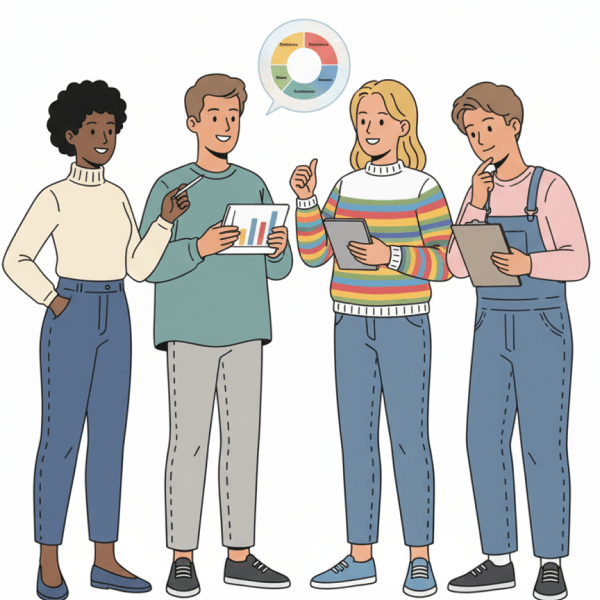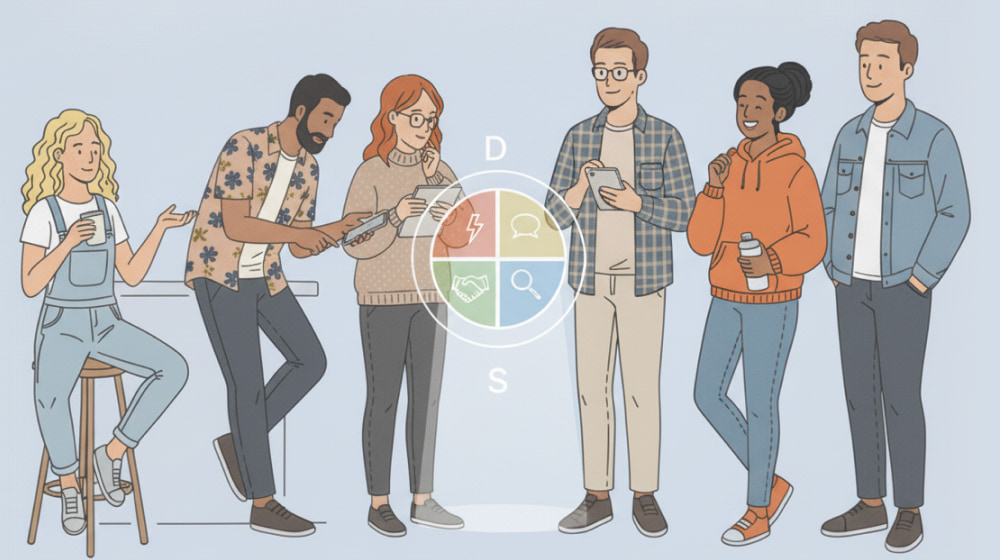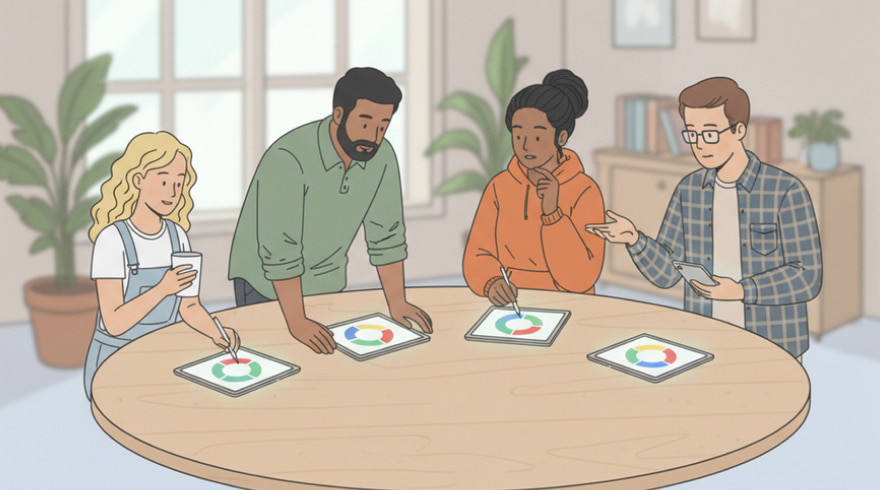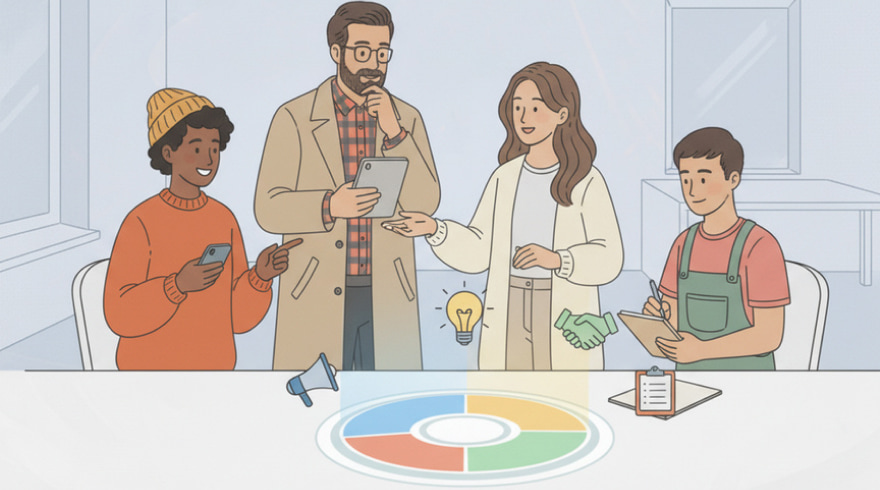
The Power of DISC: Building Shared Language for Teams
In practical settings, organizations use simple questionnaires to capture situational preferences and translate them into a shareable, visual profile that sparks meaningful dialogue. For many readers, the familiar tool behind this profile is the DISC test, which transforms everyday interactions into readable patterns for development. Rather than being a one-time label, the output becomes a living reference point for feedback, coaching, and self-reflection. With that shared vocabulary, teams can depersonalize disagreements and focus on outcomes while honoring different styles.
- 1Creates a neutral language for behavior, not character judgments.
- 2Improves meetings by aligning pace, detail level, and decision-making expectations.
- 3Builds empathy by revealing how others approach risk, structure, and collaboration.
Boost Performance
Across hiring, onboarding, and succession planning, many HR leaders incorporate a standardized survey often referenced as the DISC assessment test, which supports fair, repeatable conversations about fit and development goals. Performance reviews benefit because managers can coach in ways that match energy, detail orientation, and preferred pace. For everyday learners, one approachable entry point is the framework frequently described as the DISC test personality, which presents behavioral tendencies.

Mastering Work With DISC Communication Styles Test
When someone first meets the framework, a frequent question is, what exactly do the letters mean and how should they be used without stereotyping teammates unfairly. In that spirit, the inquiry many newcomers ask namely what does DISC stand for in personality test becomes the doorway to a richer DISCussion about behaviors and flexibility. Understanding that the model describes observable patterns, not fixed traits, helps teams use it ethically and effectively.

Beyond the acronyms, people want to connect insights to everyday decisions, metrics, and outcomes so they can improve performance without guesswork or bias. For that reason, facilitators often emphasize the meaning of DISC personality test, which is to offer a common map for situational awareness and intentional adaptation in real work. By translating tendencies into action plans, teams turn awareness into measurable results. Because the framework illuminates how people express ideas and receive information, many professionals use it in parallel with a communication style test, which clarifies preferences for pace, detail, and tone during high-stakes conversations. Combining these viewpoints equips managers and individual contributors to negotiate expectations before misalignment erodes trust.
- DominanceAction-oriented, decisive, challenge-focused, comfortable with risks.
- InfluenceOutgoing, persuasive, enthusiastic, energized by collaboration.
- SteadinessPatient, supportive, consistent, values harmony and reliability.
- ConscientiousnessAnalytical, thorough, quality-driven, guided by standards.
Standardize Team Behaviors With DISC Assessment
When leaders set expectations with clarity, performance reviews become coaching conversations rather than compliance checklists. In those conversations, the widely used DISC profile test provides a concise snapshot that streamlines development plans across roles and levels today. The profile serves as a starting point for aligning responsibilities with strengths, while also identifying growth edges where adaptation would unlock better outcomes.

Organizations that scale effectively often create common playbooks for meetings, decision rights, and cross-functional workflows. To reinforce these playbooks, many talent teams employ DISC personality profile testing, which supports onboarding, career pathing, and succession planning with shared language. That consistency reduces friction during transitions and helps new hires ramp faster. Global and distributed teams face unique pressures around time zones, cultural norms, and asynchronous collaboration. For remote environments, a simple way to standardize behaviors is the DISC assessment free online test, which enables widespread access to aligned insights across regions. With synchronized language, managers can lead with fewer misunderstandings and more accountability.
- 1Aligns coaching with motivational drivers to increase engagement.
- 2Enhances sales DISCovery and negotiation outcomes through style matching
- 3Reduces conflict by clarifying intent and expectations before work begins.
Easy Team Insights
As you iterate on your development plan, consider using a light-touch screening for teammates who might be exploring the concept for the first time. In many cases, a simplified starting point is a free DISC test, which makes it easier to pilot team workshops and gather feedback afterward. After the pilot, you can select deeper debriefs, coaching, or certification based on impact and demand.

How to Take DISC Communication Styles Test
For accessibility and convenience, many professionals prefer a digital route, especially when they need to share outputs across a team. In that scenario, a helpful option is to complete a DISC test online, which simplifies distribution and follow-up coaching across locations. Digital reports also make it easier to annotate your insights and track progress over time.
Before you dive into your first profile conversation, consider how you’ll debrief results, set action items, and revisit them after a sprint or project cycle. For budget-conscious learners, one entry point can be a free DISC assessment test, which allows experimentation with the model before investing in deeper workshops. Regardless of the format, the key is turning insights into micro-habits that support goals.
| Dimension | Behavioral Signals | Motivators | Stressors | Coaching Tips |
|---|---|---|---|---|
| Dominance | Direct, fast-paced, challenge-oriented | Autonomy, results, impact | Bureaucracy, delays, micro-management | Agree on outcomes, offer choices, keep it concise |
| Influence | Expressive, social, optimistic | Recognition, collaboration, variety | Isolation, rigid rules, negativity | Open with rapport, invite input, celebrate progress |
| Steadiness | Calm, supportive, patient | Stability, trust, teamwork | Sudden change, conflict, pressure | Provide context, pace changes, show appreciation |
| Conscientiousness | Analytical, precise, structured | Quality, logic, expertise | Ambiguity, errors, rushed timelines | Share data, define standards, allow preparation |
Frequently Asked Questions
- How accurate is the model for predicting workplace success?
DISC is not a crystal ball; it is a structured lens for interpreting behavior in context. It excels when used to guide communication, clarify expectations, and shape environments that enable diverse styles to succeed. Accuracy improves when results are DISCussed collaboratively and connected to specific tasks, stakeholders, and timeframes. The purpose is practical adaptation, not rigid categorization. By treating the profile as a living document, teams refine its utility with each retrospective and milestone.
- Can the insights change over time, or are they fixed?
Behavioral expressions can shift with role changes, stress levels, leadership expectations, and learned skills. While core preferences may feel stable, people regularly flex based on context. Periodic refreshers help confirm what has evolved and which patterns remain consistent. These recalibrations ensure your development plan stays relevant as responsibilities and environments change.
- Is there a cost-effective way to explore DISC before rolling it out company-wide?
Pilots are a smart approach; start with a small cohort, analyze outcomes, and then scale. For budget-sensitive teams, one accessible pathway is trying a DISC personality test free, which lets stakeholders experience the language before deeper investment. After the pilot, gather feedback from participants and managers to refine your implementation strategy.
- What resources help individuals get started without formal training?
Self-guided guides, DISCussion prompts, and peer coaching circles can yield immediate wins. For learners who want a lightweight starting point, an approachable option is a free DISC personality test, which provides a baseline report to spark reflection. Pair that insight with a 30-day plan that targets one meeting type, one feedback moment, and one decision process for deliberate practice.
- Are there options for students or job seekers who need quick insights?
Career explorers benefit from succinct tools that highlight strengths for interviews, resumes, and networking. For fast exploration without budget barriers, many turn to a DISC test for free, which accelerates self-awareness before key conversations. With a clear sense of tendencies, candidates can tailor examples that demonstrate adaptability, collaboration, and problem-solving.
The Latest News
-
![Your Complete Guide to DISC: Improve Communication, and Thrive Together]() Your Complete Guide to DISC: Improve Communication, and Thrive Together What the DISC Framework Is and Why It Matters The DISC framework is a practical, behavior-focused model that helps people notice patterns in the way they communicate, make decisions, and respond to stress. Rather than boxing anyone in, it reveals tendencies you can flex based on the situation. Lead...
Your Complete Guide to DISC: Improve Communication, and Thrive Together What the DISC Framework Is and Why It Matters The DISC framework is a practical, behavior-focused model that helps people notice patterns in the way they communicate, make decisions, and respond to stress. Rather than boxing anyone in, it reveals tendencies you can flex based on the situation. Lead... - 29 October, 2025
-
![DISC Personality Profile Testing: A Complete, SEO-Optimized Guide for Insightful Growth]() DISC Personality Profile Testing: A Complete, SEO-Optimized Guide for Insightful Growth Understanding the DISC Model and Why It Endures People communicate, decide, and collaborate in strikingly different ways, and the DISC framework distills those patterns into four approachable styles: Dominance, Influence, Steadiness, and Conscientiousness. Rather than labeling individuals, the mode...
DISC Personality Profile Testing: A Complete, SEO-Optimized Guide for Insightful Growth Understanding the DISC Model and Why It Endures People communicate, decide, and collaborate in strikingly different ways, and the DISC framework distills those patterns into four approachable styles: Dominance, Influence, Steadiness, and Conscientiousness. Rather than labeling individuals, the mode... - 28 October, 2025
-
![The Ultimate Guide to Measuring Communication Effectiveness]() The Ultimate Guide to Measuring Communication Effectiveness What Is a Modern Communication Evaluation? People interact in layered ways that blend clarity, tone, timing, and intent, and those dynamics can be hard to decode without structured observation. A modern diagnostic translates those subtle signals into observable indicators that are comparable across...
The Ultimate Guide to Measuring Communication Effectiveness What Is a Modern Communication Evaluation? People interact in layered ways that blend clarity, tone, timing, and intent, and those dynamics can be hard to decode without structured observation. A modern diagnostic translates those subtle signals into observable indicators that are comparable across... - 27 October, 2025
Please Note
This website (disccommunicationstylestest.com) is not an official representative, creator or developer of this application, or product. All the copyrighted materials belong to their respective owners. All the content on this website is used for educational and informative purposes only.



